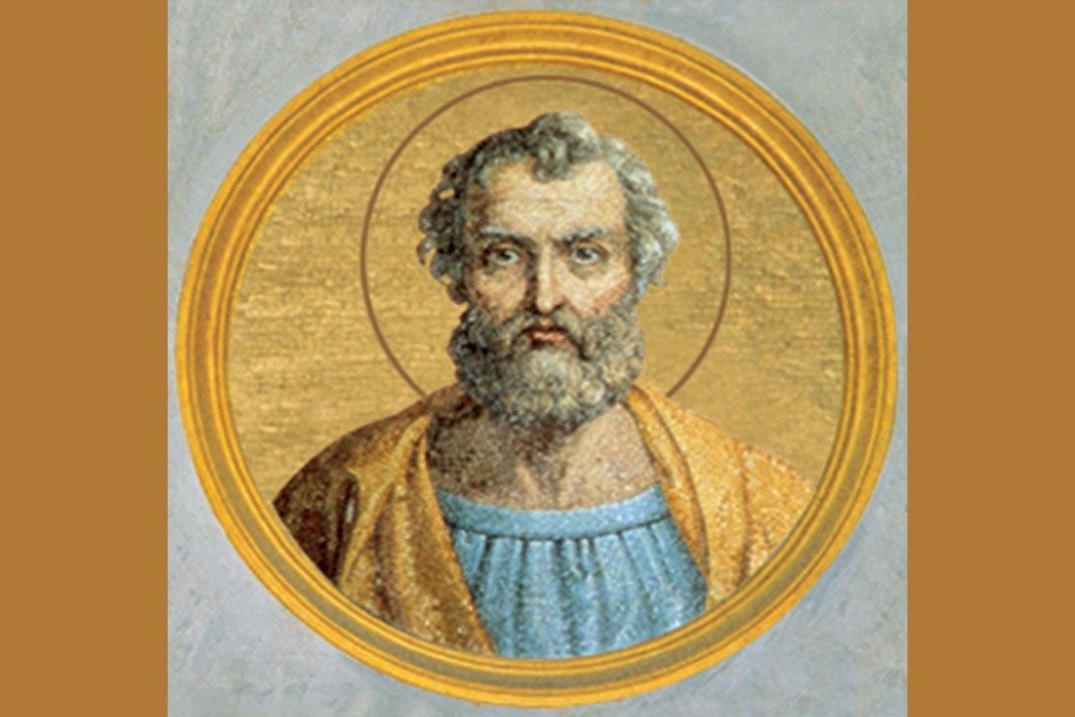
Saint Of The Day For December 30: Saint Felix I, Pope
A Roman priest, Pope from 269 to 274, Felix had Masses celebrated over the tombs that held the relics of Christian martyrs.
He strongly defended the doctrine on the Trinity of God and the Incarnation of the Word.
The Story of Felix
According to the Liber Pontificalis, Felix was of Roman birth and his father’s name was Constantius.
He ascended the throne of Peter on 5 January 269.
During his pontificate he decreed that an annual mass be celebrated on the tombs of the martyrs (Hic constituit supra memorias martyrum missas celebrare).
The author of this news evidently alluded to the custom of privately celebrating the Eucharist at the tombs of the martyrs in the crypts of the catacombs (missa ad corpus), whereas the solemn celebration, which always took place in the basilicas built over the catacombs, dates back to the 4th century, when the great Roman cemetery basilicas were built.
He died under Aurelian, on 30 December 274, most probably not a martyr, and was buried at the second mile of the Via Aurelia, in a basilica he wanted (Hic fecit basilicam in via Aurelia, ubi sepultus est).
Felix: Mystifications and errors in a biography
However, in all likelihood, many of these reports are false. It does not appear that Felix suffered martyrdom, in fact, his name, in the 4th century, was not recorded in the Depositio martyrum (list of martyrs), but in the Depositio episcoporum (list of bishops of Rome).
Another recurring inconsistency is that of his dies natalis (day of birth in heaven, i.e. death): both the Liber Pontificalis and the Roman Martyrology record 30 May instead of 30 December.
Probably the compiler of the Liber Pontificalis, in copying the date from the Depositio, read III Kal.iun. (third day before the Kalends of June) instead of III Kal.ian. (third day before the Kalends of January).
As for the basilica, there is no certainty that Felix was its architect.
Moreover, as the Depositio reported, he was not buried on the Via Aurelia, but in the cemetery of Callistus on the Via Appia.
The pope was probably confused with a martyr Felix buried on the Via Aurelia itself.
Even the liturgical decree attributed to him by the Liber Pontificalis cannot be proven authentic.
The author probably attributed his authorship to Felix because this pope preserved the custom of celebrations for martyrs.
It follows from the above that the only certain information on Felix I is that given in the Depositio episcoporum: his burial place and the years of his pontificate.
Felix and heresy
When Felix succeeded Dionysius, Rome received the report of the synod of Antioch, which the previous year had deposed the local bishop, Paul of Samosata, for his heretical beliefs regarding the doctrine of the Trinity.
In any case, it was under his pontificate that Emperor Aurelian decided to assign the property of the church of Antioch to those in communion with the church of Rome.
The letter to the Church of Alexandria Written by Felix
During the Council of Ephesus in 431, a letter from Felix to Maximus, Patriarch of Alexandria, was read out.
This letter discusses the doctrines of the Trinity and the Incarnation (“…We believe that our Lord Jesus Christ born of Mary is the VERB, the eternal Son of God, and not man other than God raised by God Himself to this honour.
The Son of God did not choose a man for the incarnation; there are not two persons in Christ.
The Word, perfect God, became incarnate in the womb of Mary and became man’) against Paul of Samosata but, most likely, this epistle was written by the Apollinarians in favour of their sect.
Read Also:
Saint Of The Day For December 28: Holy Innocents, Martyrs
Saint Of The Day For December 27: Saint John, Apostle And Evangelist
Saint Of The Day For December 26: Saint Stephen, First Martier
Women And The Art Of Speech: Economy Of Francesco’s Solidarity With The Women Of Iran
8 December 1856: Lyon, SMA (African Missions Society) Is Founded
D.R. Congo: Congolese Catholics Take To The Streets To Protest Increasing Violence
DR Congo, They Were Organising A Peace March: Two Women Kidnapped In South Kivu
